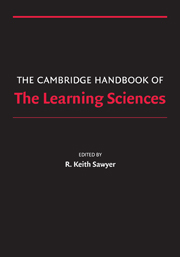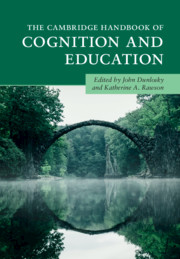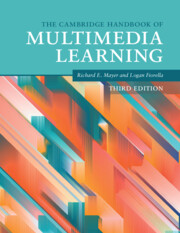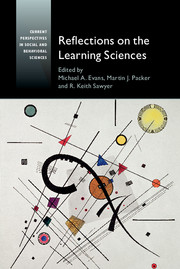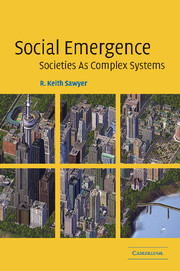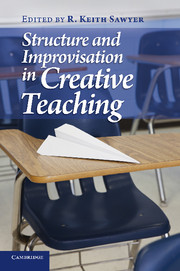The Cambridge Handbook of the Learning Sciences
Learning sciences is an interdisciplinary field that studies teaching and learning. The sciences of learning include cognitive science, educational psychology, computer science, anthropology, sociology, neuroscience, and other fields. The Cambridge Handbook of the Learning Sciences, first published in 2006, shows how educators can use the learning sciences to design more effective learning environments - including school classrooms and also informal settings such as science centers or after-school clubs, on-line distance learning, and computer-based tutoring software. The chapters in this handbook each describe exciting new classroom environments, based on the latest science about how children learn. CHLS is a true handbook in that readers can use it to design the schools of the future - schools that will prepare graduates to participate in a global society that is increasingly based on knowledge and innovation.
- Written for a broad audience of students, researchers, teachers, and administrators
- The research presented shows how to effectively use computers and the Internet in schools
- The chapters summarize research but in a style that will be accessible to teachers and administrators as well as education researchers
Reviews & endorsements
"The introduction is an excellent, albeit fairly sophisticated, overview of the key features of the field of learning sciences [...] The book's chapters elaborate on many of the themes broached in the introduction. Throughout, there is also criticism of instructionism and behaviorism, their focus on narrow facts and disconnected knowledge, and their inherent limitations in the development of expertise and deep learning."
-- American Reference Books Annual
Product details
June 2006Adobe eBook Reader
9780511217685
0 pages
0kg
20 tables
This ISBN is for an eBook version which is distributed on our behalf by a third party.
Table of Contents
- Preface R. Keith Sawyer
- 1. Introduction: the new science of learning R. Keith Sawyer
- Part I. Foundations:
- 2. Foundations and opportunities for an interdisciplinary science of learning John Bransford, Brigid Barron, Roy Pea, Andrew Meltzoff, Pat Kuhl, Phil Bell, Reed Stevens, Daniel Schwartz, Nancy Vye, Byron Reeves, Jeremy Roschelle and Nora H. Sabelli
- 3. Constructionism Yasmin B. Kafai
- 4. Cognitive apprenticeship Allan Collins
- 5. Cognitive tutors: technology bringing learning sciences to the classroom Kenneth R. Koedinger and Albert Corbett
- 6. Learning in activity James G. Greeno
- 7. Knowledge building: theory, pedagogy, and technology Marlene Scardamalia and Carl Bereiter
- Part II. Methodologies:
- 8. Learner-centered design: reflections on the past and directions for the future Chris Quintana, Namsoo Shin, Cathleen Norris, and Elliot Soloway
- 9. The evolution of design studies as methodology Jere Confrey
- 10. Design-based research: a methodological toolkit for the learning scientist Sasha Barab
- 11. Guiding inquiry-based math learning Paul Cobb and Kay McClain
- 12. Analyzing collaborative discourse R. Keith Sawyer
- 13. Assessing for deep understanding Sharon M. Carver
- Part III. The Nature of Knowledge:
- 14. Case-based reasoning Janet L. Kolodner
- 15. The knowledge integration perspective on learning and instruction Marcia C. Linn
- 16. A history of conceptual change research: threads and fault lines Andrea A. diSessa
- 17. Spatial representations and imagery in learning Daniel L. Schwartz and Julie Heiser
- 18. Literacy and the learning sciences Annemarie Palincsar and Barbara G. Ladewski
- Part IV. Making Knowledge Visible:
- 19. Project-based learning Joseph S. Krajcik and Phyllis Blumenfeld
- 20. Making authentic practices accessible to learners: design challenges and strategies Daniel C. Edelson and Brian J. Reiser
- 21. BioKIDS: an animated conversation on the development of curricular activity structures for inquiry science Nancy Butler Songer
- 22. Cultivating model-based reasoning in science education Richard Lehrer and Leona Schauble
- 23. Exploring mathematics through construction and collaboration Richard Noss and Celia Hoyles
- Part V. Learning Together:
- 24. Computer-supported collaborative learning Gerry Stahl, Timothy Koschmann, and Daniel D. Suthers
- 25. WILD for learning: interacting through new computing devices anytime, anywhere Roy D. Pea and Heidy Maldonado
- 26. Arguing to learn Jerry Andriessen
- 27. Learning in online communities Amy Bruckman
- Part VI. Learning Environments:
- 28. Motivation and cognitive engagement in learning environments Phyllis C. Blumenfeld, Toni M. Kempler and Joseph S. Krajcik
- 29. Learning as a cultural process: achieving equity through diversity Na'ilah Suad Nasir, Ann S. Rosebery, Beth Warren and Carol D. Lee
- 30. Prospects for transforming schools with technology-supported assessment Barbara Means
- 31. Internet use in schools: promise and problems Janet Ward Schofield
- 32. Teacher learning research and the learning sciences Barry J. Fishman and Elizabeth A. Davis
- 33. Scaling up: evolving innovations beyond deal settings to challenging contexts of practice Christopher Dede
- 34. Conclusion: the schools of the future R. Keith Sawyer
- Afterword: after how comes what Seymour Papert
- Epilogue: the fundamental issue in the learning sciences Roger C. Schank.

